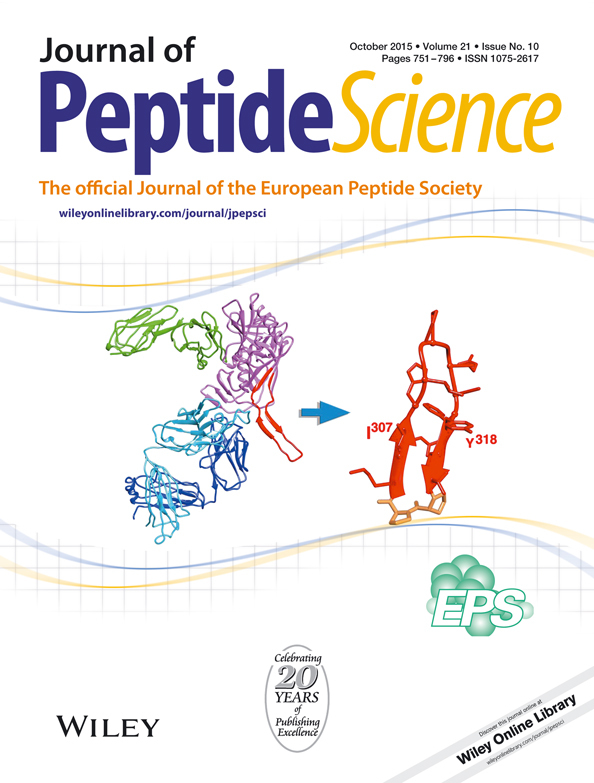Site-specific labeling of synthetic peptide using the chemoselective reaction between N-methoxyamino acid and isothiocyanate
Abstract
Site-specific labeling of synthetic peptides carrying N-methoxyglycine (MeOGly) by isothiocyanate is demonstrated. A nonapeptide having MeOGly at its N-terminus was synthesized by the solid-phase method and reacted with phenylisothiocyanate under various conditions. In acidic solution, the reaction specifically gave a peptide having phenylthiourea structure at its N-terminus, leaving side chain amino group intact. The synthetic human β-defensin-2 carrying MeOGly at its N-terminus or the side chain amino group of Lys10 reacted with phenylisothiocyanate or fluorescein isothiocyanate also at the N-methoxyamino group under the same conditions, demonstrating that this method is generally useful for the site-specific labeling of linear synthetic peptides as well as disulfide-containing peptides. Copyright © 2015 European Peptide Society and John Wiley & Sons, Ltd.




